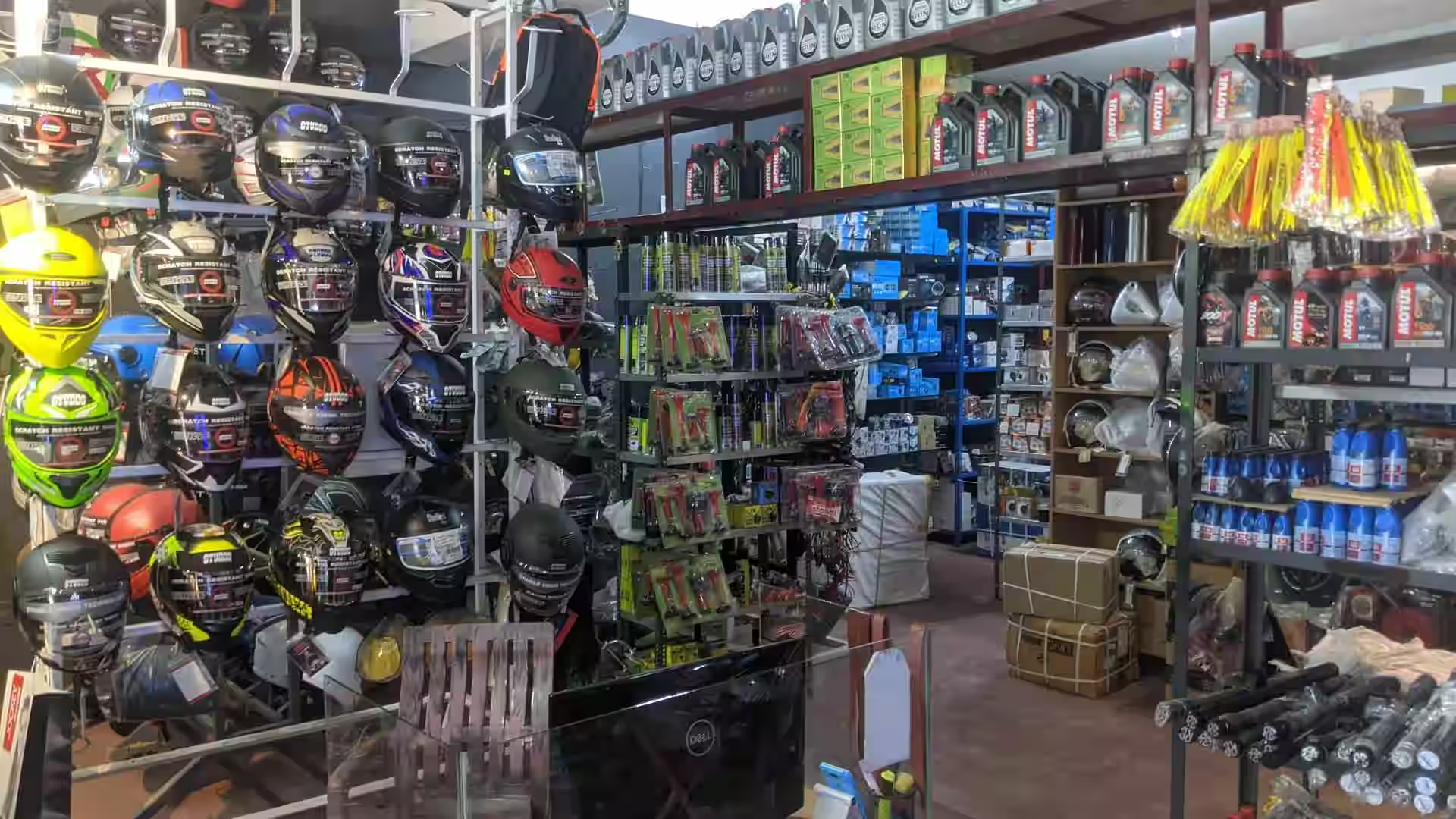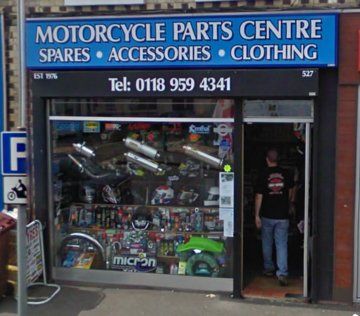Locate Affordable Costs on Motocross Parts NZ for each Bike
Locate Affordable Costs on Motocross Parts NZ for each Bike
Blog Article
Understanding the Important Parts of a Bike: A Comprehensive Guide for Fanatics
For motorbike lovers aiming to boost their riding experience and guarantee their bikes run efficiently, understanding the necessary parts of a motorbike is vital. Each component, from the engine's detailed functions to the crucial function of the braking systems, not just influences performance but additionally security and convenience. This guide will go through the essential components that every motorcyclist should be acquainted with, making it possible for informed options in both upkeep and possible upgrades. As we start this expedition, one must ask: just how does each component communicate to produce the smooth experience every fanatic seeks?
Engine Components

The camshaft plays an important duty in controlling the timing of the engine's shutoffs, guaranteeing the accurate opening and closing needed for effective fuel and air consumption, in addition to exhaust expulsion. This timing is important to keeping optimal engine efficiency and performance. Additionally, the carburetor or fuel shot system, depending on the bike version, is responsible for blending air with gas in the correct proportion for burning.
The air conditioning system, either air or liquid-based, functions to maintain the engine's temperature level within operational restrictions, stopping overheating and making certain durability - mx parts nz. Each part, thoroughly created and integrated, adds to the seamless procedure of the engine, specifying the bike's power output and total efficiency
Transmission System
Integral to the motorcycle's functionality, the transmission system makes sure effective power transfer from the engine to the wheels. This system makes up a number of essential parts, including the clutch, gearbox, and last drive, each playing a vital role in converting the engine's power into motion. The clutch, commonly run by a hand bar, serves to disengage the engine and involve from the transmission, permitting smooth equipment changes and controlled velocity.
The transmission, often referred to as the transmission appropriate, includes a set of equipments that cyclists can manually move through to change the bike's speed and torque output. These equipments are arranged in a sequence that enables the motorcycle to increase smoothly and keep optimal engine efficiency across various rates. The majority of bikes make use of a sequential transmission, calling for the cyclist to change equipments in a predetermined order.
Braking Mechanisms
While recognizing the transmission system is crucial to using a bike's power, just as important is the ability to manage and stop that power efficiently, which is where braking mechanisms enter play. Brakes are essential for security and efficiency, giving the cyclist with the necessary control anonymous to browse numerous surfaces and conditions. Usually, motorbikes include 2 sorts of stopping systems: disc brakes and drum brakes.
Disc brakes are a lot more widespread in modern bikes due to their remarkable performance. This system uses better warmth dissipation, regular performance, and enhanced stopping power, specifically in wet problems.
Conversely, drum brakes, though less typical, are still located in some bikes. They work by pushing brake footwear against the internal surface area of a drum affixed to the wheel. While generally much less reliable in heat dissipation and quiting power, drum brakes are easier and a lot more affordable.
Recognizing these stopping systems' subtleties allows bikers to preserve their bikes appropriately and appreciate the engineering that makes certain effective and risk-free quiting.
Suspension and Guiding
Suspension and steering systems are important parts that dramatically influence a bike's handling and trip comfort. The shock absorber, including forks at the front and shock absorbers at the rear, absorbs road abnormalities, enhancing stability and control. Front forks, upside down or typically telescopic, compress and rebound to alleviate impacts, while rear shock absorbers keep tire call with the roadway, crucial for traction and security.
Guiding, focused around the handlebars, connects the rider to the motorbike's directional control. The guiding head bearings make sure smooth operation, allowing specific ability to move. Proper positioning and maintenance of these bearings are important for predictable steering response and minimizing cyclist exhaustion.
The suspension's adjustability is an additional essential aspect; preload, damping, and rebound settings permit personalization to fit various riding styles and conditions. This adaptability is important for maximizing efficiency, whether browsing city roads or tackling sturdy tracks. Technologies like digital suspension systems supply real-time modifications, boosting adventure high quality across varied surfaces.

Electrical Solutions
After making certain a smooth and controlled ride with reliable suspension and steering systems, interest transforms to the electrical systems, an essential facet of modern-day motorbikes. These systems play an essential role not just in beginning the engine but additionally in powering various elements that boost the performance and safety and security of the motorbike.
At the heart of a motorcycle's electric system is the battery, which stores electrical power needed for beginning the engine and powering auxiliary systems - mx parts nz. The generator or generator, combined with the rectifier-regulator, makes sure the battery continues to be charged while the bike functions, transforming power into electric energy and keeping voltage degrees
The ignition system, another vital part, is accountable for firing up the air-fuel mix in the engine's cylinders. Modern bikes usually make use of an electronic ignition system, providing better efficiency and reliability compared to conventional systems.
Lights systems, including headlights, tail lights, dirt bike tool bag and signs, are likewise crucial, ensuring presence and safety and security for the biker. Extra electronic components such as sensors, control units, and displays add to innovative attributes like gas shot monitoring, anti-lock stopping systems (ABDOMINAL), and electronic dashboards, even more enhancing the riding experience.
Verdict
A comprehensive understanding of a motorbike's necessary components, consisting of the engine, transmission system, braking mechanisms, suspension, guiding, and electrical systems, is essential for pop over to this site enthusiasts intending to optimize efficiency, comfort, and safety. Proficiency of these elements enables for informed choices relating to upkeep and upgrades, eventually enhancing the riding experience. By incorporating this knowledge, cyclists can guarantee their motorbikes run at peak efficiency and dependability, thus making the most of both pleasure and long life of their cars.
For motorcycle fanatics looking to elevate their riding experience and guarantee their bikes run smoothly, understanding the crucial components of a bike is extremely important.Essential to the motorcycle's functionality, the transmission system guarantees reliable power transfer from the engine to the wheels.While understanding the transmission system is essential to taking advantage of a motorbike's power, equally crucial is the capability to regulate and stop that power efficiently, which is where stopping devices come right into play. Typically, motorbikes include 2 types of braking systems: disc brakes and drum brakes.
A thorough comprehension of a bike's important components, including the engine, transmission system, braking systems, suspension, steering, and electric systems, is important for enthusiasts intending to maximize performance, comfort, and safety and security.
Report this page